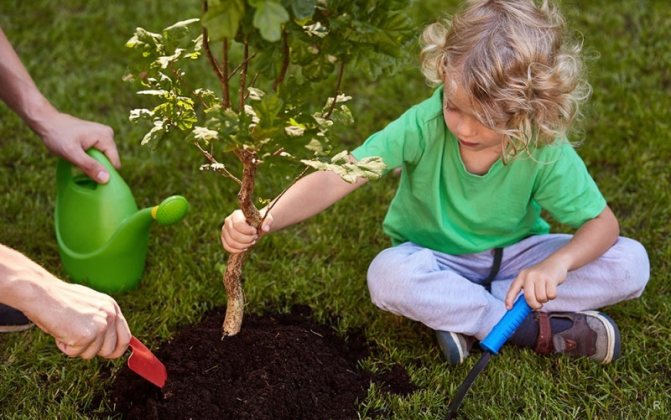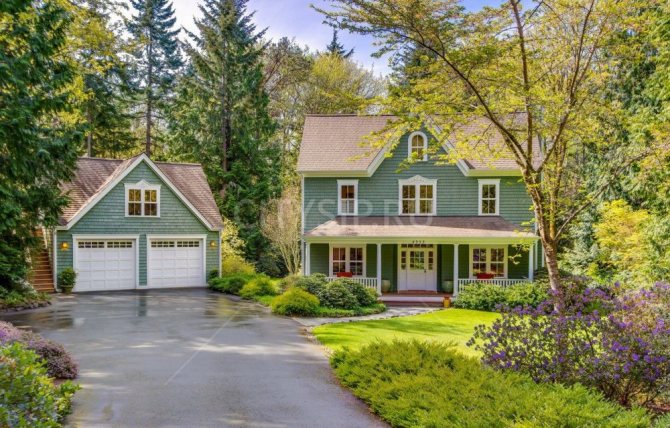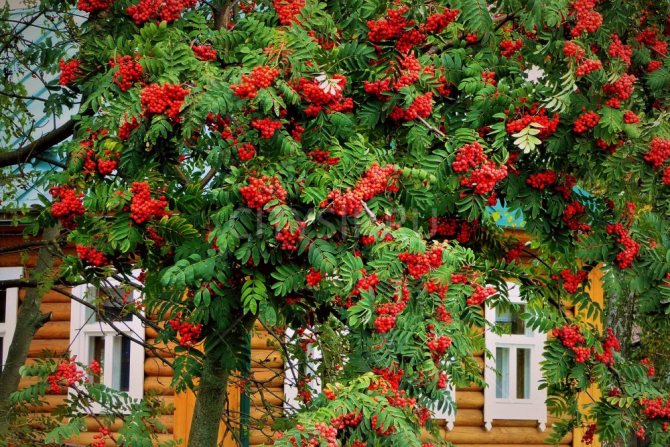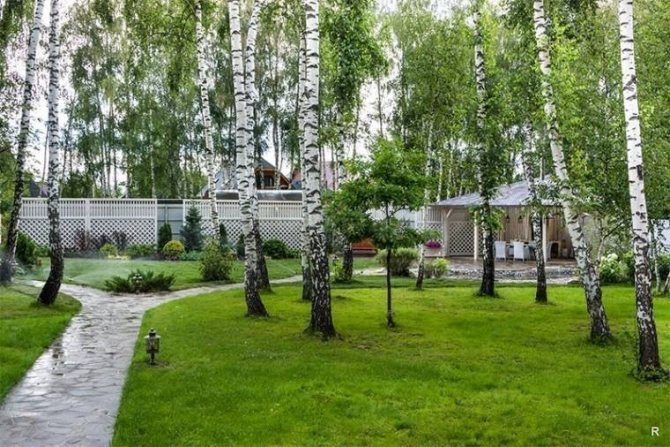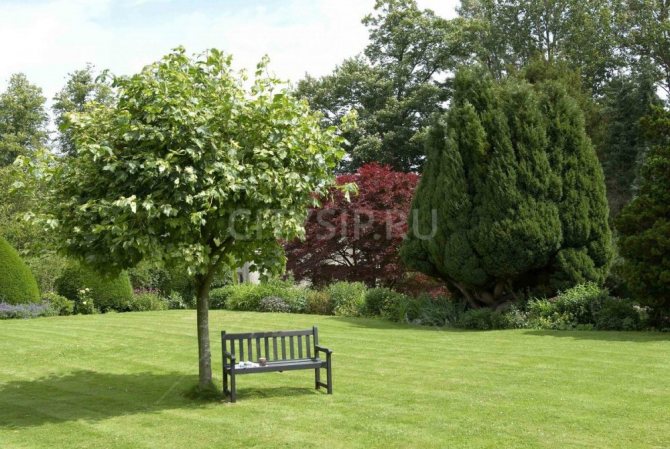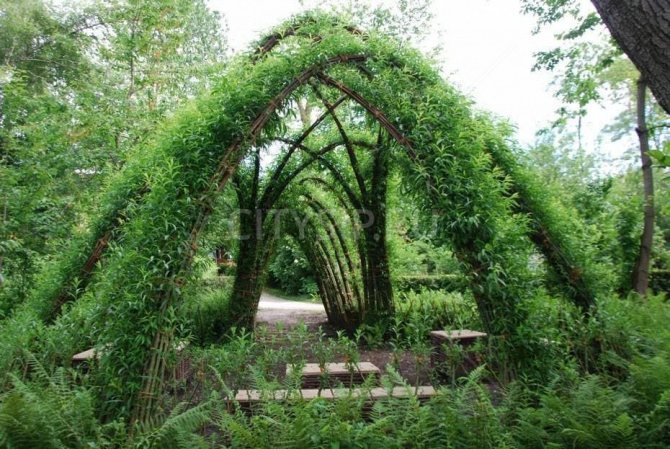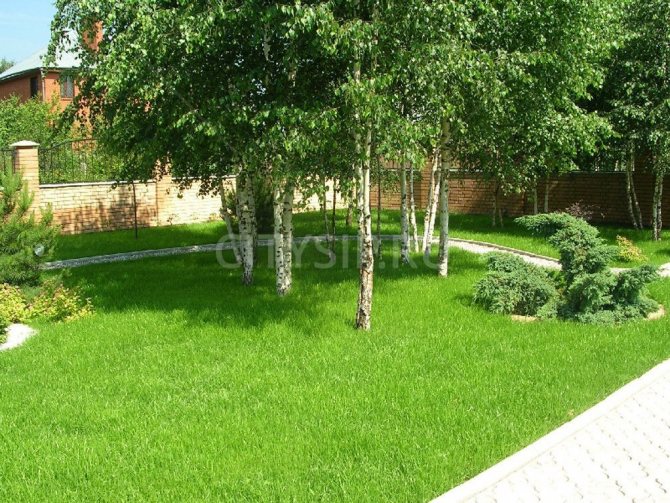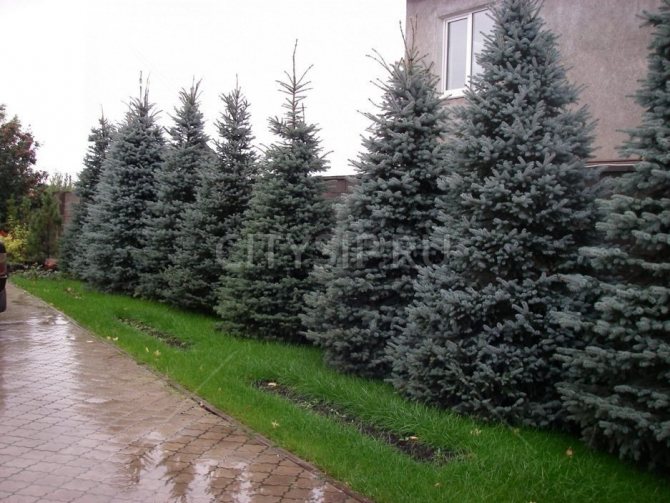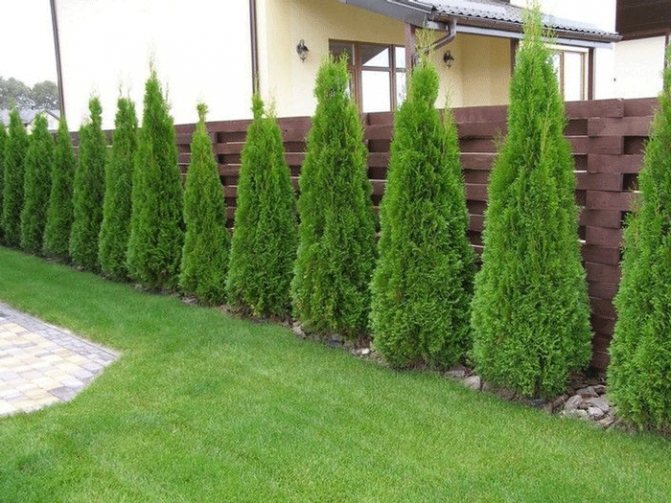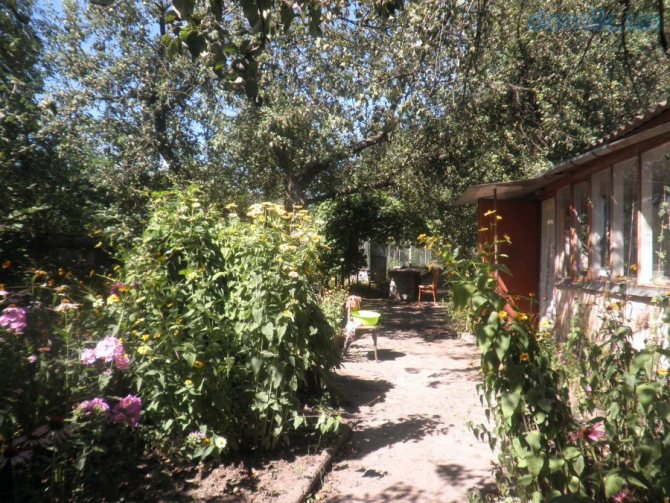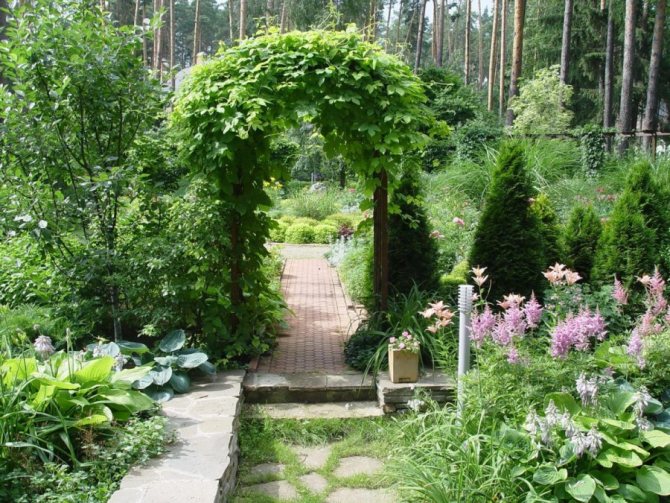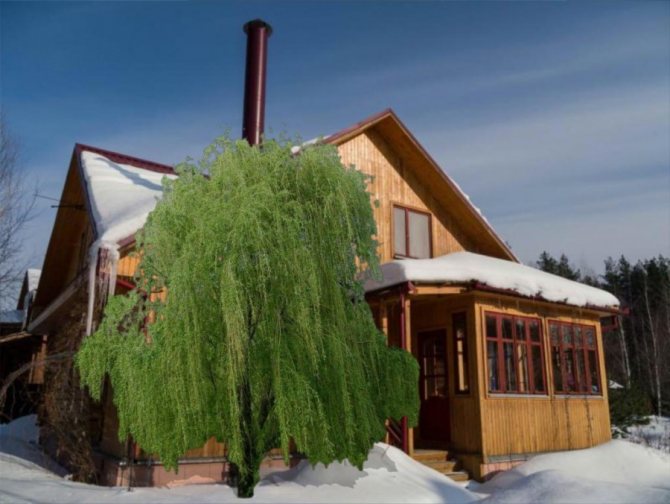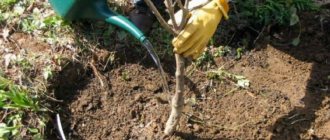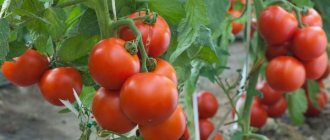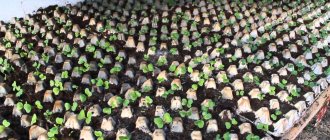It is difficult to imagine a private house without a single tree on the site. It is plants that create a sense of harmony in any space where people are going to live or already live. Usually, seedlings are chosen and planted even at the stage of building a house - this is done by a landscape designer, and sometimes the owner of a country house himself.

For many years, green spaces delight the owners of the house with flowering, aroma and even delicious fruits. However, each plant requires a specific approach and has an impact on everything that surrounds it. Some of them are even overgrown with superstitions, and the Internet is full of information about the energetic properties of certain breeds. As for their location, distance from each other and from other objects - this is regulated by the requirements of SNiP.
Why is it not recommended to plant a birch near the house
The impeccable beauty of birch groves, stretching across the endless expanses of our country, has been praised more than once by great painters and masters of the pen. Birch looks attractive in single plantings and in group.
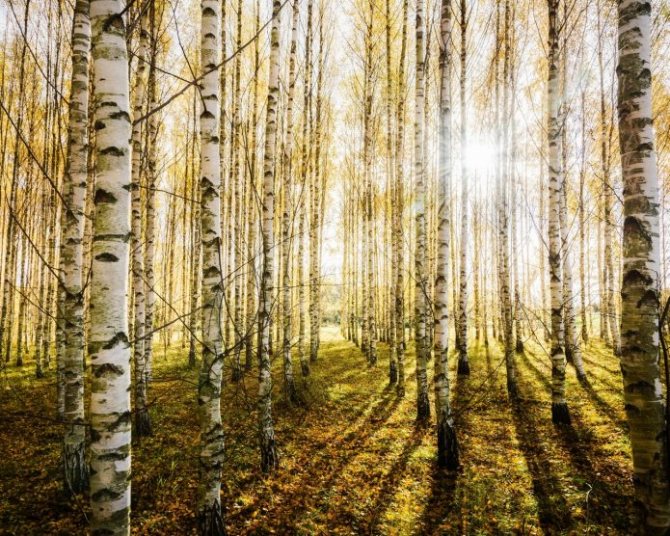

In a birch grove it is always brighter than in another forest, it is believed that birch gives illumination and peace of mind
Among compatriots, there is hardly anyone who has never heard of healthy birch sap. Lovers of baths and saunas must prepare a couple of birch brooms for themselves, and it is better to find birch firewood for kindling. This tree crop is an excellent melliferous plant, appreciated in landscape design. Dense birch wood is an excellent building material, and birch tar is used in medicine and leather production.
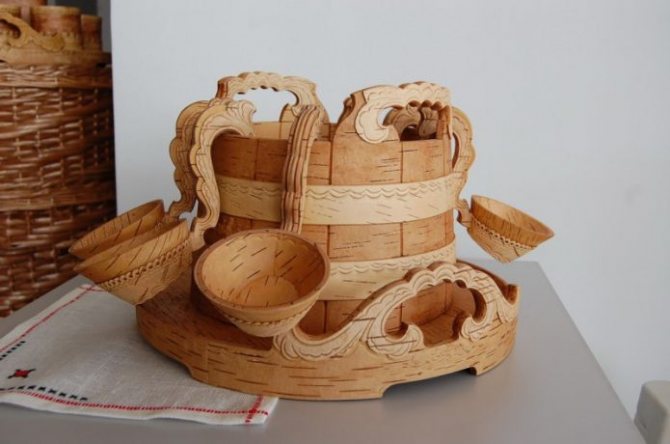

The top layer of the bark of this amazing tree - birch bark - is extremely durable; kitchen utensils, crafts, furniture are made from it.
But as a decoration in ornamental gardening, birch must be chosen with care.
Objective reasons
Birch is a tall tree, reaching 20–40 m in height and up to 1.2 m in girth, which, according to various sources, has a life expectancy of 80 to 150 years. This must be taken into account when planting in a garden or nearby.
- Birch pollen is a long-known allergen; in people with hypersensitivity, seasonal flowering causes hay fever - an allergic reaction of the body in response to pollen from various plants. This disease can provoke bronchial asthma.
- It should be remembered that birch wood is flammable, therefore it is extremely dangerous when there are dry old birches near the house.
- Due to its height and the flexibility of its branches, tree crops can pose a hazard to power lines, especially in bad weather. There is also a threat of a tree falling on the house.
- This tree culture is moisture-loving - if a birch grows on the site, you must be prepared for the fact that it will take most of the moisture and nutrients from the soil. As a rule, within a radius of 3-4 meters from a tree, plants, ornamental shrubs and exotic plants, which are demanding on nutrition, do not take root well.
- It is not recommended to plant birch close to residential buildings, the roots of the tree can damage the foundation and get to underground utilities. For safety, it is planted at a distance of 6–8 meters from buildings.
- Fallen inflorescences (catkins), small birch twigs, foliage - all this strongly clogs gutters and roof canopies.
When to plant tulips outdoors in spring
It is recommended to plant tulips outdoors in spring early. The most basic condition is that the snow has already melted, and the soil at a depth of 10 cm has time to warm up to + 8-9 ° С.
It is important to plant tulips in spring, taking into account the weather forecast: in the next 20-25 days after the scheduled day, serious frosts should not be expected. Otherwise, the bulbs will most likely die, and if they survive, they will not bloom soon.


In order for tulips to successfully root in the open field in spring, the soil at a depth of 10 cm must warm up to + 8-9 ° С
Thus, the approximate time for planting tulips in the ground in the Moscow region in spring is mid / late March and early April. In the regions located to the north, suitable conditions may come much later, sometimes at the beginning of May.
Important! Early bulbs are usually planted as early as possible. As for late tulips, it is permissible to "stretch" the planting dates until the end of June.
Video: what trees can be planted at home
The amazing beauty of this tree will not overshadow the gloomy and ridiculous superstitions, there are always supporters of unjustified signs. But if we take objective arguments into account, then the danger of this tree culture is not so widespread as to be abandoned in landscape design. Those who are selflessly devoted to the beauty of birches can always plant a tree at a safe distance from home and enjoy the perfect creation of nature both in winter and in summer.
Birch has a powerful protective energy. But it protects the home only if it grows outside the yard, near the gate or wicket. In this case, it blocks the path of the negative. You should not plant birch trees directly near the house. And this is due not only to the large size of the tree, but also to bad omens.
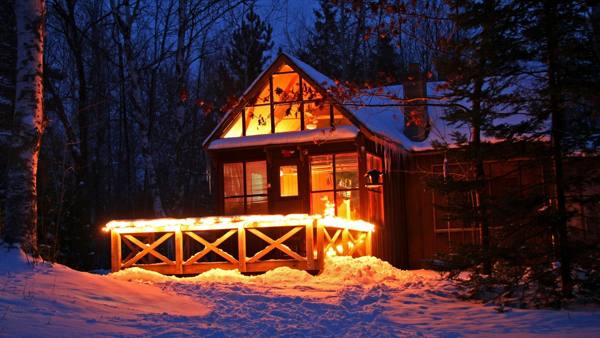

Thuja
The thuja tree protects not only from the common cold. The plant amazingly copes with hypertension, drives away annoying insects and fills the house with an intoxicating fresh scent. It is possible to plant thuja in the yard only in warm weather conditions. In the middle lane, the thuja is exhibited for the summer in the yard in huge pots, and for the winter they are brought into the house or in the greenhouse.
Based on the convictions of energy, thuja contributes to a very striking manifestation of the peculiarity. If you are into art, thuja is needed for you as the best and most powerful source of inspiration. But you can forget about a strong family. Quarrels, quarrels, scandals between wives and servants, quarreling and fighting kids are a side effect of outbursts of individualism. Thuja is a tree of professional and brightest egoists. You also don't have to worry about marital fidelity - it will not be at all. Anything - advanced ideas of marriage, experiences with different partners and partners, warm spiritual friendship, a hippie community. But just not an ordinary family - this is very boring for a person who has fallen under the spell of thuja.
Signs and superstitions about a birch
In pagan times, magical properties were attributed to birch. Signs and superstitions regarding the white-stemmed tree were predominantly negative in nature. So, it was believed that:
- Witches use birch sap as an ingredient in potions prepared for "black" deeds.
- The weeping crown attracts misfortunes in which you will have to shed tears.
- By the omen, there will be no happiness in a house built in a birch grove.
- A birch tree in the yard prevents residents from building relationships, provokes quarrels and betrayals.
- Mermaids live in long tangled branches. The rustling of the foliage is the whispering of the drowned women.
- The growths on the trunk are the result of the action of witchcraft.
- The weeping tree connects the real and the afterlife. Therefore, he was often planted at the churchyard.
Choosing trees according to the climatic zone
Before you buy seedlings, be smart about their choice.Southern thermophilic specimens die quickly or do not take root at all in cold areas. Often gardeners unsuccessfully try to grow fruit crops in the country that are demanding on the air temperature.
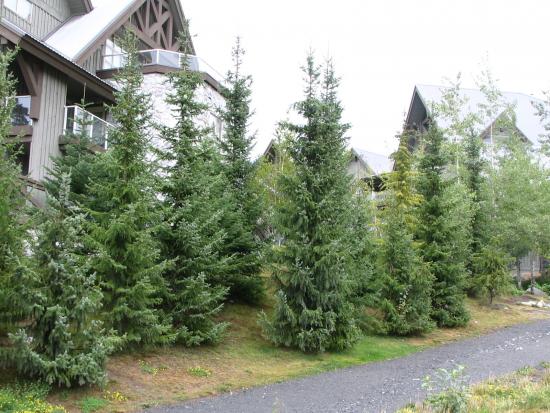

Trees for northern latitudes
Among the ornamental representatives of the flora, the following common species tolerate the cold climate perfectly:
- black or russian willow
- raquita
- Rowan
- white acacia
- birch (various varieties)
- blue spruce
- Norway maple
- thuja
- oak
- amur velvet
The situation is more difficult with fruit. Most of them die in icy winters. Pay attention to walnut, resistant apple varieties, hawthorn, lingonberry, blueberry. Now on the market there are other fruit crops adapted to the harsh conditions.
Trees for mid-latitudes
In a temperate climatic zone, the choice for planting green spaces is huge. Broad-leaved (beech, ash, linden), conifers (spruce, pine), small-leaved (aspen, birch) species, as well as most of the fruit representatives, take root well.
If there are severe frosts in middle latitudes, they last for a short time. In the temperate zone, the temperature may drop to -25-30 C. Therefore, choose plants that can withstand such cold weather.
Trees for the southern lane
Warm weather conditions with low temperature fluctuations are ideal for creating a fertile garden.
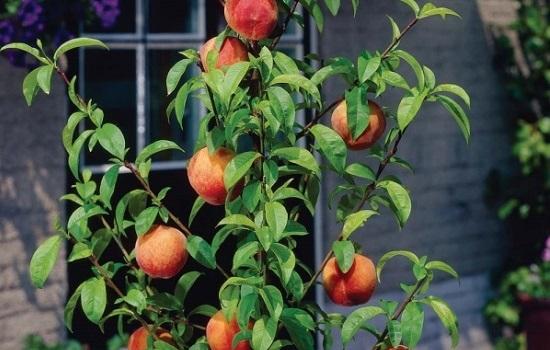

In the south, thermophilic ones develop well and bear fruit:
When choosing seedlings, objectively assess the climate in which the plant will have to live. Get the most adapted varieties. Do not give in to the urge to do the impossible and grow something completely exotic.
Can I plant near the house?
The answer to this question is negative. Esoteric experts explain why it is impossible to plant a birch near the house, beliefs and signs of a negative nature:
- According to the old belief, spirits hide in the rustling birch crown. And these supernatural beings are not necessarily kind. Evil spirits living in the branches harm the house and its residents.
- In the old days, travelers avoided a lonely birch tree: it was believed that a restless dead man lived among the branches, and his blood was sweet birch sap.
- It is undesirable for a tree to grow under the window of the women's room. According to the sign, the hostess of the room will face infertility or other serious diseases of the reproductive system.
- It is believed that the life of a person with a birch in the yard will be short-lived and lonely.
- Birch is one of the symbols of sadness. You should not plant it on your site for people who are emotionally unstable, depressed. The "crying" crown in the autumn period is associated with longing, loneliness, joyless life.
If, due to the threat of collapse on the house or for any other reason, the tree is to be cut down, then you need to ask his forgiveness. After the petition, the tree should be given another day of life. Instead of a sawn plant, it is imperative to plant a new one of any kind.
The optimal place for the white-trunk "beauty" is outside the fence of the estate. In this case, the plant will protect the house from negativity.
If a person is superstitious, afraid to accept, then birch for him is not the best option for planting near the house. There are many other energy-safe cultivated and wild plants for the backyard area.
Juniper
You can plant junipers to clean the air in your yard. It is a complex plant with strong magical qualities. The smoke and essential oils of juniper can easily dispel any evil spell.
Juniper increases the craving for knowledge, ease of perception, prevents the development of pulmonary and colds, strengthens the immune system. Juniper gives self-confidence, its berries can be used as a seasoning for meat and are able to change salt. But an easy life next to a juniper will not work.People are seized by the craving of wanderings, the latest memories, thoughts, the freshest wind settles in the soul and calls for it.
If a happy marriage and quiet home comfort are considered your values, you should avoid junipers and do not plant them near your home. If you are satisfied with eternal loneliness, a company of joyful friends, a playful growing up of children and their departure from their parent's nest on massive wings - with a good education and brilliant prospects - a juniper in the yard is your best friend.
Why is it considered that you can not plant birch on the site and near the house
Since ancient times, birch has not been planted in the immediate vicinity of human habitation. This fact is explained not only by existing prejudices and superstitions, but also by objective reasons.
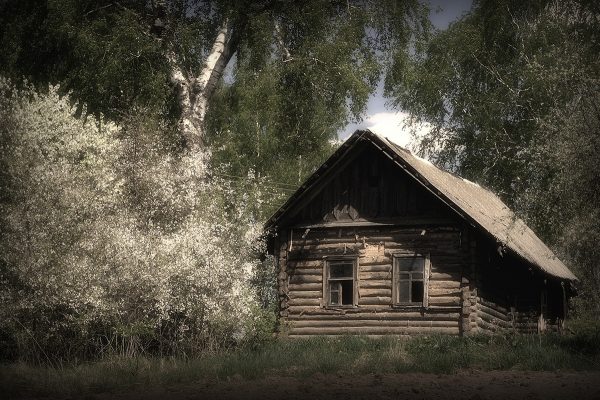

It is better not to plant a birch near the house
What logic suggests
The reasons why it is better not to plant a birch on a site or near a house are explained logically:
- Birch refers to large trees, which sometimes reach one and a half meters in girth, and sometimes exceed all thirty in height. According to the crown, the root system also grows, the thick and strong roots of which are able to cause significant damage to the building, gradually destroying the foundation.This can be avoided if, during landing, leave at least 7-8 meters from the wall of the house, as well as from underground communications (gas pipeline, telephony, fiber-optic Internet cable, water supply, etc.).
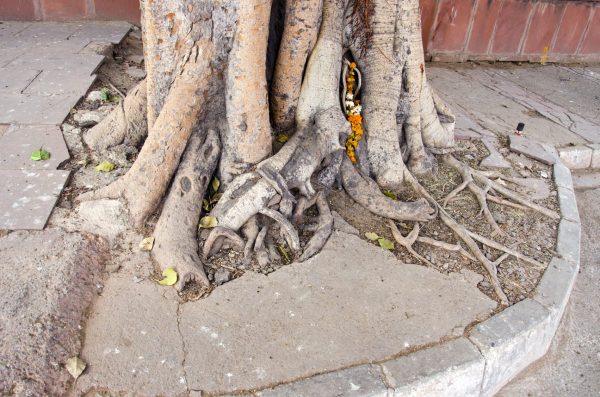

The roots of large trees tear not only asphalt, but also the foundations of buildings
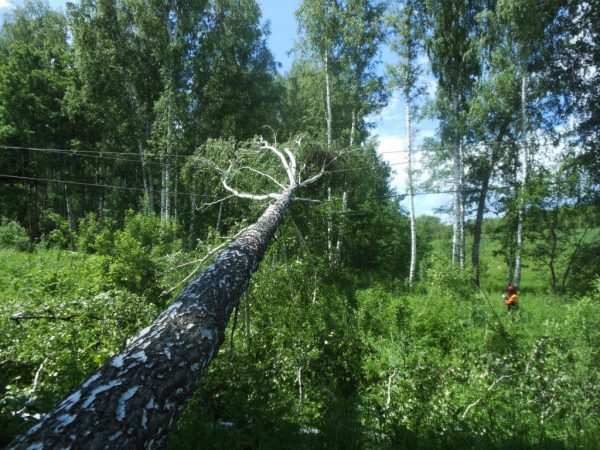

Birch can fall and damage power lines
A birch grows under my window, now it is quite large. But when it was planted, flowers (phlox, bells, etc.) grew in the front garden. Gradually they all died, and now there is not even grass under the tree, only bare earth.
Video: disadvantages of growing large birch on the site
Signs and superstitions
There are many superstitions and prejudices that predict misfortunes and hardships for people who dared to plant a birch on their own plot:
- According to one of the popular beliefs, various spirits (both good and evil) live in the openwork crown of this tree. Since it is not clear which of them will be active, it is better to plant the white-trunked beauty at the gate, outside the boundaries of the land plot. The mythical inhabitants there will guard the entrance and will not let evil spirits into the estate.
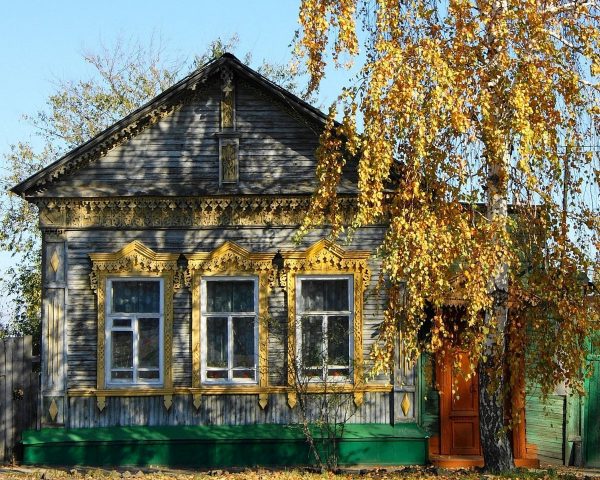

It is better to plant a birch outside the boundaries of the site, at the gate


Do not touch the birch mouthpiece
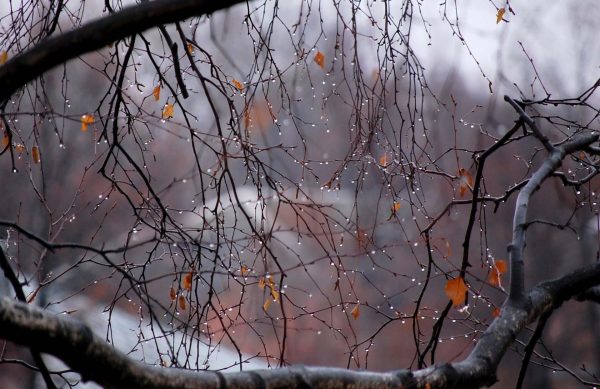

Dangling birch branches make you sad
However, there are also positive superstitions that say that birch protects from the evil eye, helps to heal from serious diseases, takes on all the negativity, and also protects home peace and comfort.
Overview of fruit trees and their features
Many, having a summer cottage, want to plant fruit trees in the garden. For good fruiting, they need a high level of illumination, feeding, watering, pruning and preventive treatments for diseases and pests.
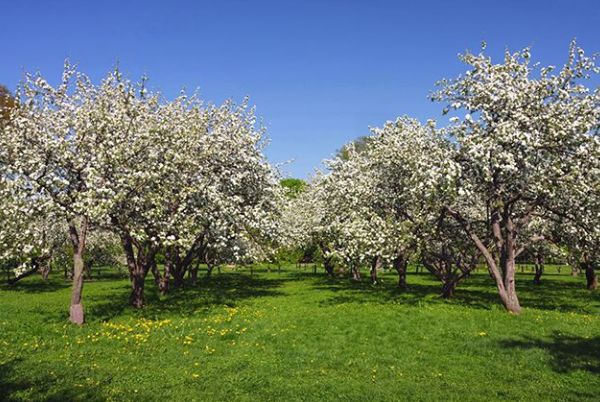

Planting several varieties with the same ripening period has a beneficial effect on yield. To save space on the site, it is better to choose varieties with a compact crown shape on dwarf rootstocks. Below is a brief description of the main fruit crops according to the most significant parameters.
| Culture | Average life expectancy, years | Average tree height, m | Required feeding area, m | Preferred soils | Permissible depth of groundwater, m |
| Apple tree | from 20 to 50 | from 3 to 7 | 3x2 or 6x4 | slightly acidic | from 1 to 3 |
| Pear | 25 | 5 | 5x4 | any | 2 |
| Cherry | 25 | from 2 to 5 | 4x3 | neutral | 2 |
| Sweet cherry | 60 | from 3 to 8 | 4x4 or 8x4 | neutral | 1,5 |
| Plum | 20 | 5 | 4x3 | neutral | 1,5 |
| Cherry plum | 20 | 2,5 | 3x3 | neutral | 1 |
| Apricot | 40-60 | from 5 to 10 | 5x6 | slightly alkaline | 2-2,5 |
| Viburnum | 40 | 2,5 | 2x2 | slightly acidic | 1 |
| Irga | 50 | 2,5 | 3x2 | neutral | 1,5 |
| Honeysuckle | 20 | 1,5 | 2x1 | any | 1,5 |
| Sea buckthorn | 15 | from 3 to 5 | 2x2 | neutral | 1 |
| Rowan | 25 | 7 | 5x3 | slightly acidic | 2 |
| Hazel | 60 | 5 | 4x4 | slightly alkaline | 3 |
When choosing a fruit tree for a summer cottage, not only taste preferences, but also the climatic zone play an important role. For example, chokeberry is recommended for the northern regions, as well as honeysuckle with sea buckthorn, brought to central Russia from Siberia.


Heat-loving cherry plums, plums, sweet cherries and cherries work well in the southern regions. However, selection does not stand still and many crops adapt perfectly in atypical regions thanks to a stable stock. An excellent example of this is the Manchurian apricot and the Siberian apricot, which are suitable for cultivation in Siberia and the Far East. And although such an apricot has a specific non-winning taste, it is quite successful in processing.
Elm-pear aphid Eriosoma lanuginosum
Aphids hatching from eggs hibernating on various species of elms (Ulmus) suck the juices from young leaves, causing them to form large (6–7 cm in diameter) saccular galls. Sometimes the damaged leaves wrinkle in a spiral and turn into a pale green closed gall. In the second half of summer, aphids migrate to thin roots, less often to pear and quince shoots, where several generations of aphids develop during the entire growing season. The development cycle is two years old. Harm mainly to pear seedlings 1–2 years of age in the nursery. They are found in the southern regions of the European part of Russia, in the Caucasus, Ukraine, in Western Europe, North Africa, Asia Minor and Central. Introduced to North America and Australia.
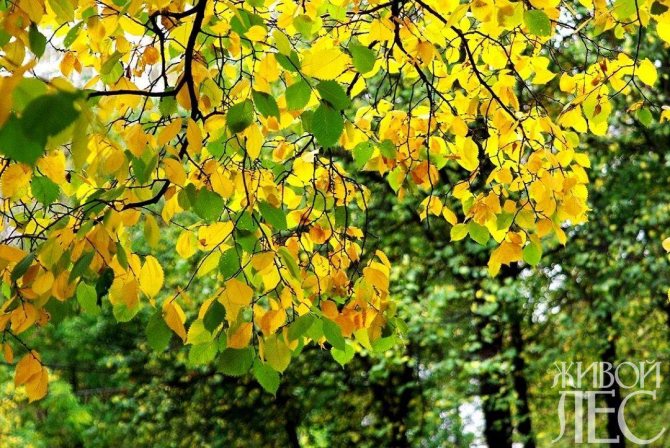

Elm
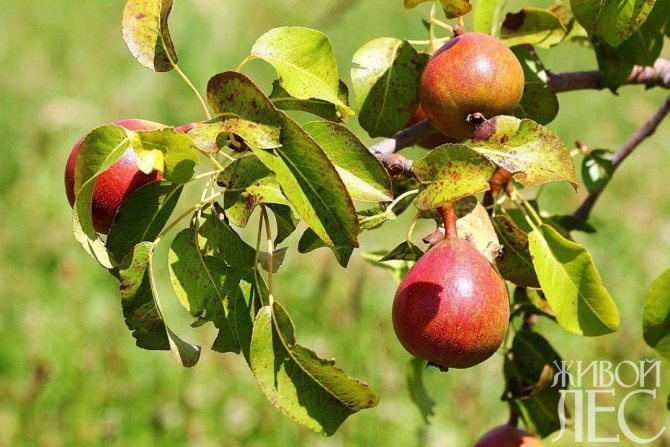

Pear
Oak transplant
When the seedlings have matured, it is time to transplant them into the ground in an open area.
How to determine the readiness of seedlings to change location:
- The plant has reached a height of 15 cm or more, it is more than 100% taller than the pot;
- The root system is formed, the central core is clearly identified, it has a healthy white color;
- The plant has already put out leaves.
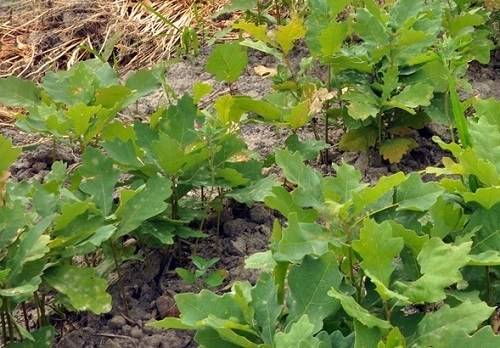

Finding the right place
Oak can only be replanted without damage at an early age. When a tree sits in one place for a long time, its root system grows and deepens, the plant takes its place thoroughly. This fact must be taken into account before transplanting. There should be enough free space on the site, you should not put new houses and structures near the oak - the root system in the future is capable of violating the integrity of the foundation.
The oak cannot stand a dark place - it is impossible to plant it in the shade or under other mature trees, it will take root for a long time, the growth rate drops significantly, you will not have to wait for a mighty stately representative of the Bukovy family.
Where to plant an oak tree in the country:
- The place must be open;
- The light-loving oak should be identified in the west - south of the site;
- In the future, a grown tree with a rich crown will itself become a source of a dark place, therefore, it is not worth placing a seedling in places where it is inappropriate;
- There should be no communications and paths near the place that can be damaged by roots.
How to plant correctly
Algorithm of actions for a successful transplant:
- The site is cleared of tall grass. How much space is needed for a seedling depends on the desired result - for a powerful tree, a free diameter of 15 - 20 m is required.
- A platform with a diameter of 1.5 meters is dug up, achieving uniformity of the soil and its loosening for enrichment with oxygen.
- Dig a hole several centimeters deep more than the length of the roots, moisten it.
- A seedling is taken out of the pot along with the soil and transferred to the prepared hole, sprinkled with earth, compacted.
- Water the planting abundantly. Do not be afraid to flood the roots - excess moisture will go deep into the soil.
- At a distance of 30 cm from the trunk, mulch is poured in a circle - it will protect the soil from drying out and the spread of unnecessary weeds.
The same action plan should be followed if you want to make a home oak. In this case, the container must have a volume of at least 100 liters.Of course, no matter how much you take care of, the potted plant will not become so large and powerful, but it will delight the eye with greenery for a longer time.
How energy affects a person


The impact on humans is explained by the fact that the tree not only absorbs carbon dioxide, instead releasing oxygen, but also transforms the human energy that it feels next to itself. People who study the energetic effects of trees divide them into donors and energy vampires.
Donor trees transform a person's negative energy into positive ones. Next to these natural healers, sadness and melancholy quickly pass, mood improves, and physical pain passes.
Trees-energy vampires take positive energy. Being around these trees can quickly feel tired. The vampire tree can negatively affect the physical condition of a person. Headaches may occur near him.
What can be planted next to conifers - examples of successful plant combinations
Adding an article to a new collection
The period when the same type of thuja was planted in the middle of the lawn and was limited to this has long passed. Now conifers of all colors, sizes and shapes are boldly combined with other plants, getting incredible compositions.
Of course, conifers themselves are a wonderful accent in any garden. They can be planted “solo” or combined with other species to create clusters that shimmer in all shades of green, blue and gold, and remain decorative all year round. We have already talked about how to make a coniferous corner in your garden.
Today let's talk about what flowers, ornamental and berry bushes, cereals and herbs can be planted next to the evergreen “neighbors”.
Yew
Yew berry, a favorite shrub for park hedges in some parts of the UK. Planting it near the house is not the best idea, the plant has a dark, overwhelming aura and makes a languid atmosphere around. The life span of a plant is up to 4 thousand years. In Russia, yew thickets can be found in the Crimea.
Tourists from time to time confuse yew with juniper and pick the poisonous yew berries as a condiment. You can get poisoned with one handful or a decoction of berries or leaves. The toxin accumulates in the body, a lethal dose can be taken in a couple of times, adding fragrant and eco-friendly seasonings to food.
If the distance to the boundaries of the site is more than 50 meters, you can plant a yew alley. The shrub is distinguished by strong antibacterial qualities, amazingly purifies the air and even traps heavy metal salts. When the yew branches are eaten by livestock, there may be animal poisoning. Milk also becomes poisonous. For fatal poisoning, the animal needs to eat 200-400 grams of leaves.
Unpretentious pines
Pine trees are light-requiring, grow well in open sunny masses, put up with partial shade; they are drought-resistant, thrive on poor soils and sands, but cannot stand stagnant waterlogging.
Unpretentious beauties of pine
In plant compositions, pines are in harmony with many ground cover plants that love the sun: saxifrage, aubriet, borage; with red-leaved barberries, spectacular contrasting compositions are obtained.
Pines and barberries
Unpretentious, first of all, are the forms of the mountain pine (Pinus mugo). We have already talked about two of them ('Gnom' and 'Mops') in the article about dwarf conifers, and here are two more non-capricious beauties.
Mountain Pine (Pinus mugo) 'Winter Gold'
Pinus mugo 'Winter Gold'. Photo from forumogrodniczeoaza.pl
This golden pine with a hemispherical, squat, unevenly developed crown shape on the sides is very consistent with its name - "winter gold". Its needles are light green in summer and golden yellow in winter. After 10 years, it reaches a height of about 0.5 m, in diameter - up to 1 m.
Mountain pine (P. mugo) 'Ophir'
Pinus mugo ‘Ophir’. Photo from the site iris.md This is another winter golden beauty (green needles in summer) from mountain pines.Surprisingly correct, rounded shape of the crown with age becomes somewhat spreading and uneven. At the age of 10, it reaches a height of 0.5 m and a diameter of 1 m.
A wide assortment of pine trees is presented in our catalog, which combines the offers of various online stores. Select pine seeds and seedlings.
Tips for the selection and planting of ornamental crops
To create a certain style in a country house or a personal plot, decorative varieties are needed. If you want to get a single composition, choose plants that are similar in style. To make the garden look neat, you will have to remember from time to time about pruning and forming the crown.
Choose small trees and shrubs for hedges. Remember that tall plants will change significantly in size over time, shading the territory of neighbors in the country and putting down roots in adjacent areas.

